- Matching (Score)
- Our verdict
- TV appearance
- Where to buy
- Contrast and black detail
- HDR effect quality
- Factory color reproduction
- Color reproduction after calibration
- Smoothness of tonal transitions
- Image scaling and smoothness of tonal transitions
- Blur and motion smoothness
- Console compatibility and gaming features
- Input lag
- Compatibility with PC
- Viewing angles
- TV efficiency during daytime
- Details about the matrix
- TV features
- Apps
- Playing files from USB
- Sound
TCL C8K vs Philips OLED770
Direct compare
C8K / QM8K
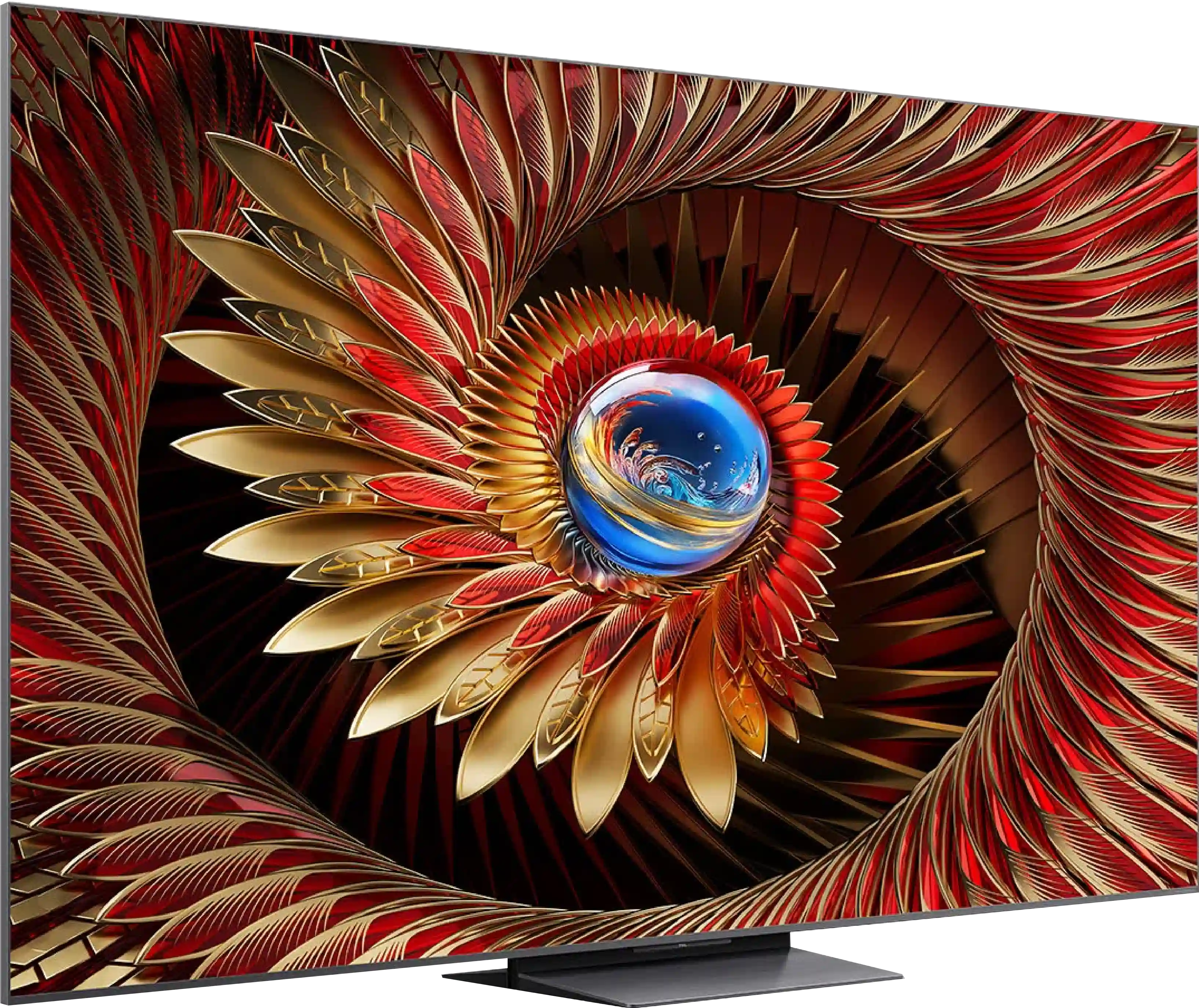

Panel type: LCD VA
Resolution: 3840x2160
System: Google TV
Model year: 2025
Complete the survey to find out the result

Panel type: WRGB OLED
Resolution: 3840x2160
System: Titan OS
Model year: 2025
Complete the survey to find out the result

Overall rating
7.7
7.5
Movies and series in UHD quality
7.4
8.0
Classic TV, YouTube
7.0
8.6
Sports broadcasts (TV and apps)
6.8
8.4
Gaming on console
8.9
9.2
TV as a computer monitor
8.6
7.6
Watching in bright light
6.9
4.8
Utility functions
7.7
5.5
Apps
9.6
6.7
Sound quality
7.9
7.0
Complete the survey to find out what fits your preferences
Advantages
Great image quality typical of OLED – perfect black, infinite contrast
AmblightTV system
Support for multiple HDR formats including Dolby Vision and HDR10+
Great image quality after calibration
Decent viewing angles
Great motion fluidity – 120Hz OLED panel!
Many features for gamers: VRR, ALLM, Dolby Vision Gaming
Low input lag
4 HDMI 2.1 ports!
Disadvantages
TitanOS has very few applications and has annoying bugs.
The remote works via infrared.
Not the best upscaling quality.
Average glare reduction – the screen behaves like a slightly dimmed mirror.
Our verdict
The Philips OLED770 is a television that stands out primarily for its picture quality – the characteristic perfect black and infinite contrast typical of OLEDs make even a regular evening binge-watching a series feel like a small cinematic experience. After calibration, colors gain naturalness and cohesion, and details in dark scenes are separated from lights with surgical precision. It’s a screen that provides a sense of interacting with premium-class technology, even though it is officially a budget OLED in Philips' portfolio. The second pillar on which the OLED770 stands strong is gaming. Here, the manufacturer has really done its homework. VRR works up to 120 Hz, we have automatic gaming mode (ALLM), and input lag in standard HDR10 or SDR modes at 120 Hz can drop to as low as 5 ms – results that will easily satisfy even demanding gamers. And finally, the Ambilight system – for many, this is just a gadget, but during longer sessions it really makes a difference. The colorful LEDs behind the screen dynamically respond to what is happening in the game, and can immerse you even more in the virtual world. That's why one can risk saying that the OLED770 is one of the more interesting budget gaming TVs on the market.
However, not everything shines that brightly, as when we come to the Smart TV aspect… TitanOS is the biggest bottleneck for this model. Theoretically, it has everything you need: access to applications, AirPlay support, and voice commands. In practice, however, the list of applications is limited, screen mirroring often doesn’t work at all, and voice search doesn’t support the Polish language. Moreover, the remote control, despite being well-designed and backlit – operates on infrared, which sounds almost anachronistic in 2025. The system is supposedly fast, but can irritate with errors and instead of encouraging usage, at times rather motivates us to turn it off. And here we come to the crux: the OLED770 is a television that works great as a screen for movies and games, but not necessarily as a multimedia center of the home. For someone who mainly uses a console, home theater, or operator decoder – it will be a hit choice. We get fantastic picture quality, a full set of modern gaming features, and of course the proprietary AmbilightTV backlighting system! But if someone is looking for a TV that is meant to replace everything and serve as a multimedia powerhouse, it’s better to look towards the more expensive Philips models, which offer more refined system solutions like GoogleTV.
TV appearance


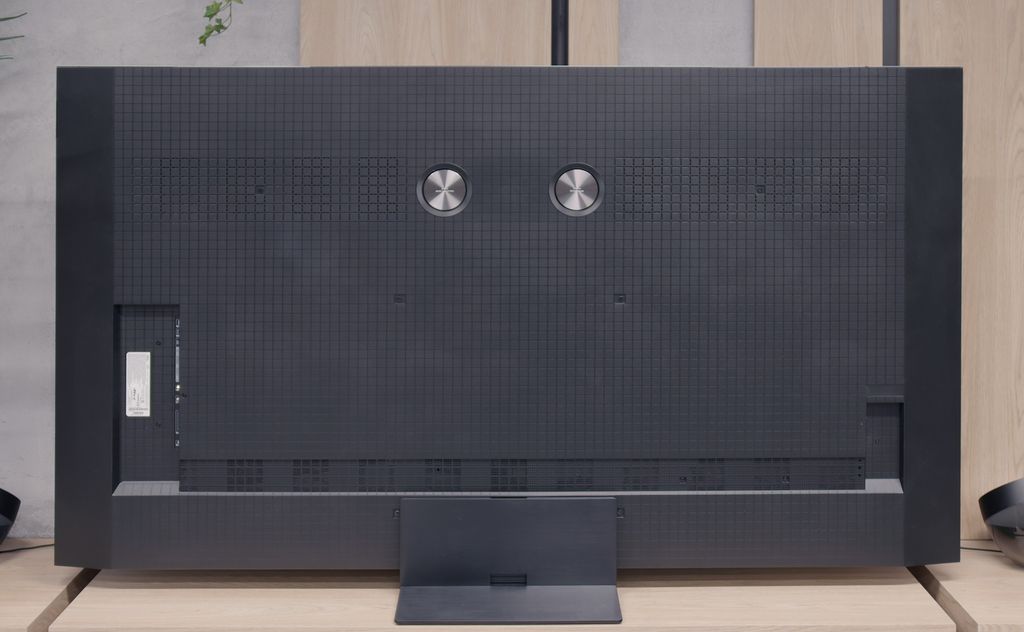
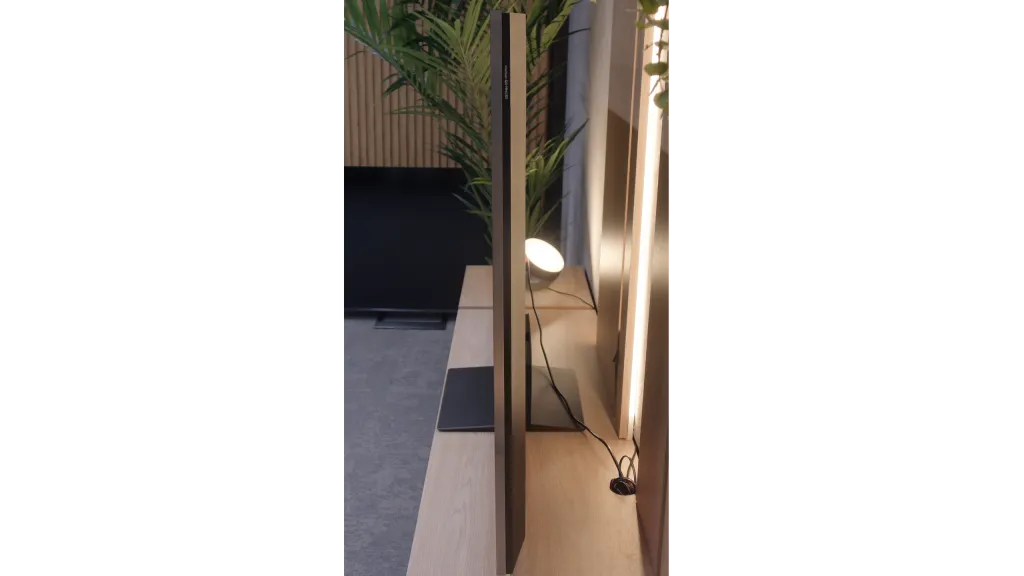




Contrast and black detail
8.2/10
10/10
Local dimming function: Yes, number of zones: 1680 (30 x 56)
Contrast:

Result
714,300:1

Result
68,100:1

Result
25,050:1

Result
17,800:1

Result
12,500:1

Result
∞:1

Result
∞:1

Result
∞:1

Result
∞:1

Result
∞:1
Halo effect and black detail visibility:


In terms of black and contrast, the Philips OLED770 does not introduce any revolution – but with OLEDs, it would be hard to expect one. The organic matrix allows for complete dimming of individual pixels, which in practice gives us almost perfect black and contrast reaching infinity. Regardless of whether we are watching night scenes in movies or scenes full of small bright points, the television precisely separates details from the background. There are no halo effects or other artifacts typical of LCD TVs with local dimming. By choosing an OLED – also in the form of model 770 – you can be assured that in this category the picture will look outstanding.
HDR effect quality
6.9/10
6/10
Luminance measurements in HDR:

Result
1241 nit

Result
510 nit

Result
1180 nit

Result
375 nit

Result
1421 nit

Result
546 nit

Result
657 nit

Result
726 nit

Result
704 nit

Result
275 nit
Scene from the movie “Pan” (about 2800 nits)


Scene from the movie “Billy Lynn” (about 1100 nits)


Static HDR10


Dynamic: Dolby Vision
Dynamic: Dolby Vision


HDR luminance chart:
Philips OLED770
HDR luminance
Luminance of RGB colors
TCL C8K
HDR luminance
The Philips OLED770 does not attempt to compete with the brightest OLEDs on the market, and it would actually be hard to expect that, as it is the lowest model in Philips's series for 2025. In our measurements, it achieved a maximum brightness of about 700 nits, which allows for enjoyment of HDR effects in scenes where light appears point-wise – for example, in the flash of headlights or a starry sky. In such moments, the picture can truly impress. However, it is different when there are more bright elements on the screen. The television, like many cheaper OLEDs, limits brightness in those cases, and the entire picture noticeably dims. This was best seen in a scene from the movie The Meg, where the sun rises behind an oil rig – at that point, the brightness dropped to about 250 nits, nearly three times less. The HDR effect remains visually pleasing, but it is worth being aware that this model performs best in scenes with less intense light. Fortunately, the OLED770 has an ace up its sleeve – the coverage of the DCI-P3 color palette is as high as 99%, so colors in movies and games are saturated and very close to what the creator intended to convey.
Factory color reproduction
4.8/10
6.2/10


Factory Mode
After calibration


Factory Mode
After calibration
The first measurements already show that the factory settings of the Philips OLED770 have a lot to improve even in Filmmaker mode. The white balance chart clearly shows a lack of blue, which gives the image a slightly yellowish tint. In practice, the white is not snow-white, but leans towards warmer hues – which some may even like, but from the accuracy perspective, this is a deviation from the norm. The gamma, on the other hand, tends to be on the darker side – the average value is about 2.6 instead of the reference 2.4. In the mid-tones, the image appears muted and more saturated, which may look too "filmic," but takes away some naturalness. However, the biggest issues can be seen in color reproduction. The average error is relatively high, and some colors – especially shades of gray – clearly deviate from what should be seen. In everyday viewing, this means that sometimes colors may look less natural than we would wish.
Color reproduction after calibration
7/10
9/10




Philips OLED770 has shown signs from the beginning that it houses significant potential, but it was difficult to fully see this in the factory settings. The image was sometimes too warm, and some colors seemed to have lost their naturalness along the way. However, calibration revealed that it is a television very receptive to adjustments – it reacted to every correction and almost immediately unveiled another layer of its capabilities. The white balance was successfully set both in SDR and HDR, eliminating the yellowish glow and presenting a neutral, clear white. Gamma stabilized closer to perfection, allowing midtones to regain their naturalness, and shadows no longer appeared artificially darkened, possibly even with a slight brightening effect. The effect was obvious... Movies are watched with greater ease; the image has cinematic depth, but without the feeling that something is exaggeratedly darkened. However, the most interesting part was the work on colors. Out of the box, the errors were not dramatic but slightly noticeable – skin tones were sometimes too warm, and gray didn’t always have the shade we expected. After calibration, the error values dropped to around 2, and in many cases even below 1. This is a level significantly lower than the threshold of perception for the human eye. In other words, after correction, the colors finally “clicked” into place. Looking at the screen, we had the impression that the television had begun to speak with a full voice. Like an instrument that has finally been well-tuned.
Smoothness of tonal transitions
8.7/10
7.6/10












In this category, there is a noticeable improvement compared to last year's Philips models. The OLED770 handles color gradation significantly better, and strongly visible transitions or artificial bands appear less frequently than before. Interestingly, we achieved the best results in dark scenes – where most televisions, especially those with WOLED panels, have the most difficulties. A good example is a shot with an actor floating in red water – the transition from intense red to black looks almost perfect here, without the typical "steps." The situation is somewhat worse in the case of bright parts of the image. With extremely bright gradients, especially near white, the television has trouble maintaining smoothness. This can be noticed, for example, in a scene from the movie Kingsman, where subtle sunrise bands appear in the background of the bright sky with the sun instead of a smooth blur. Fortunately, these situations are relatively rare, and in everyday viewing, the OLED770 presents itself very solidly and does not break immersion as it did in last year's models.
Image scaling and smoothness of tonal transitions
5.5/10
7/10
Smooth transition function
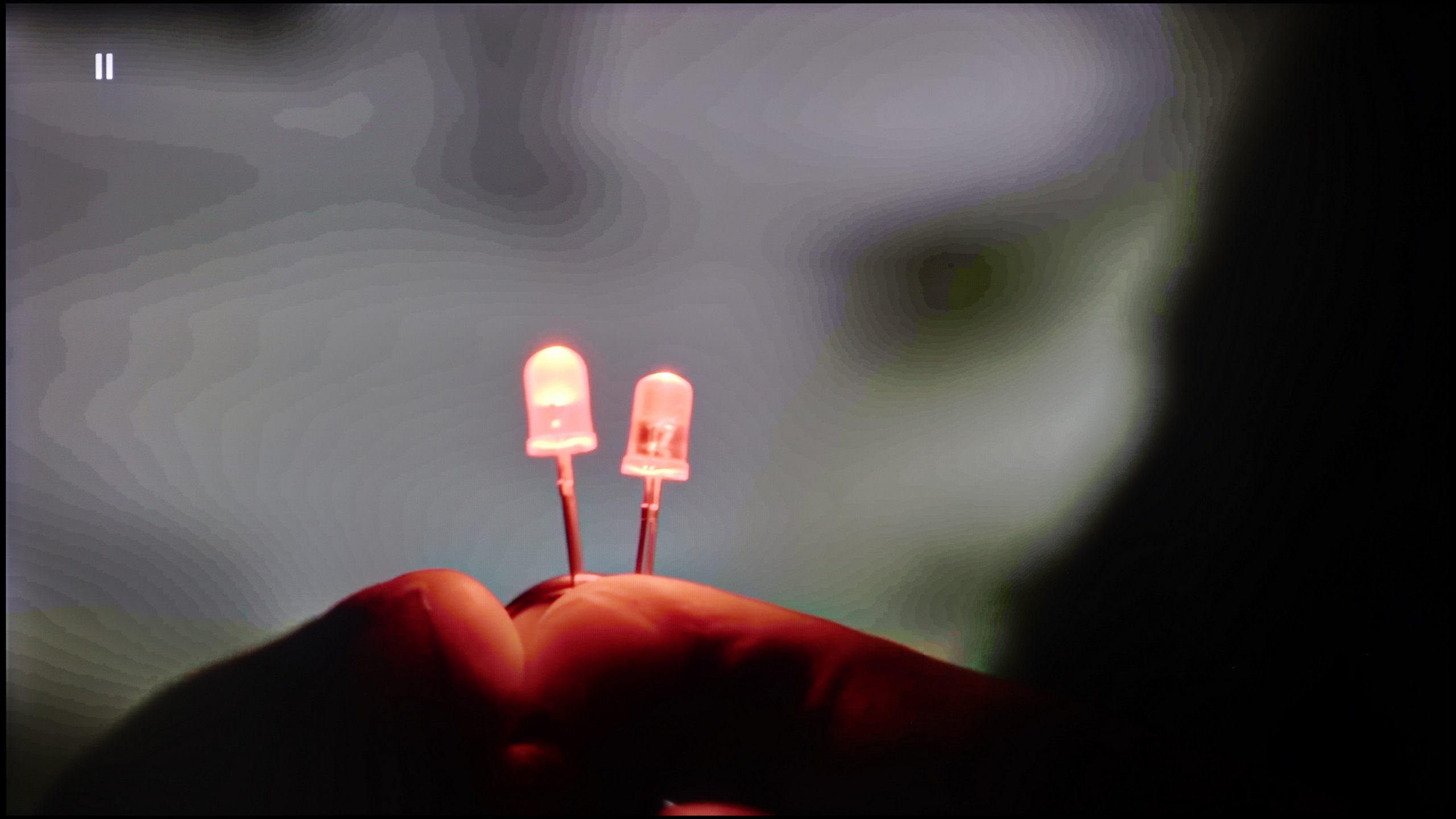

Image without overscan on the SD signal


The problem of the previously mentioned color connections can largely be mitigated by the "distortion reduction" feature, which is an algorithm for smoothing tonal transitions in Philips TVs. It works best at a low setting—effectively eliminating unwanted color bands while not introducing strange artifacts or losing image detail. It's one of those features that is truly worth keeping switched on.
The issue with upscaling is somewhat less favorable. The image from a lower resolution can be too soft, while at the same time, distinctive "jaggies" appear in certain areas. The impression is that the algorithm is trying to reconcile two contradictory directions—smoothing and sharpening—and ultimately hasn't found the golden mean. As a consolation, it's worth noting that the television has no issues with overscan, meaning it doesn't cut off the edges of the image, which sometimes happens with other competing models.
Blur and motion smoothness
7.8/10
8.4/10
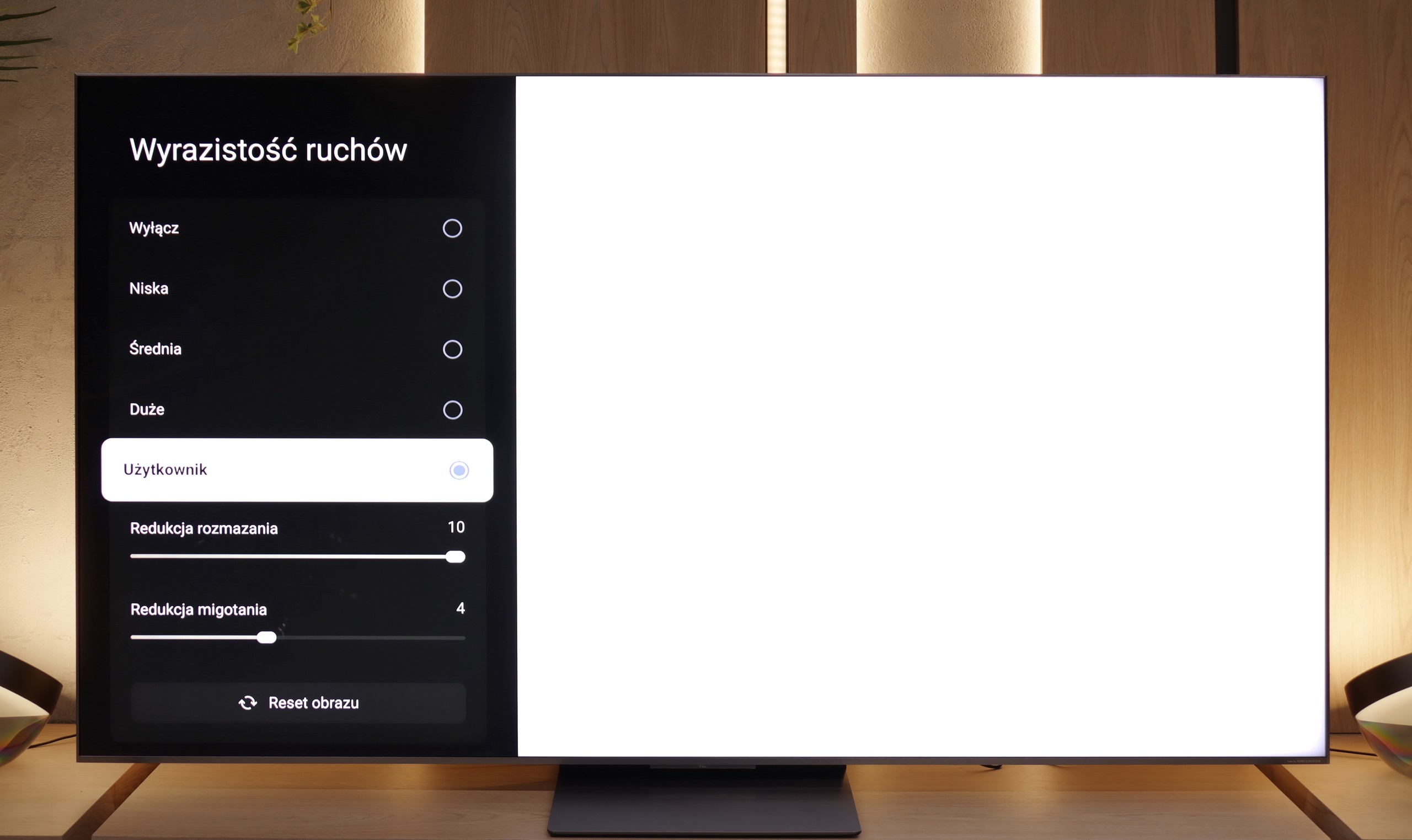

Blur (native resolution, maximum refresh rate):


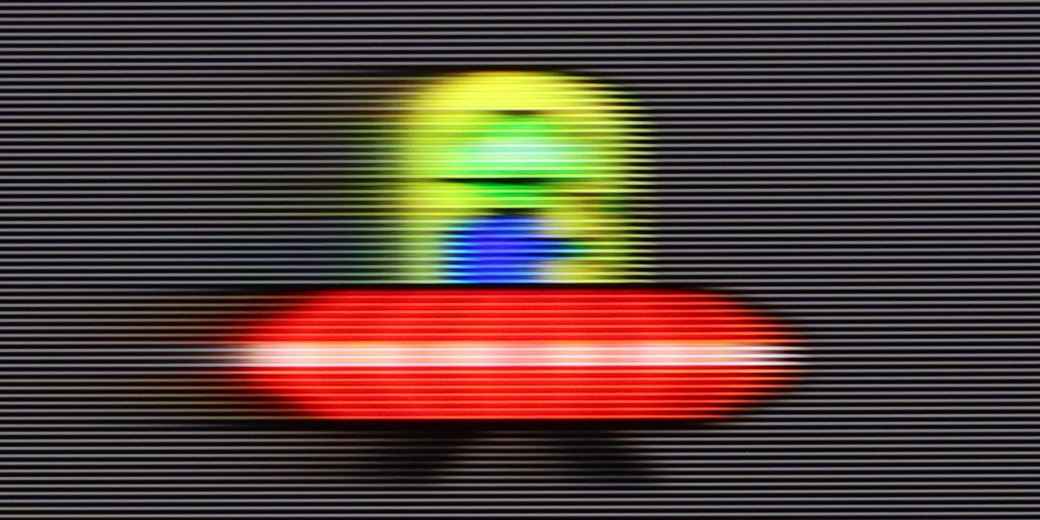



Blur (BFI function enabled):



Smużenie (288HZ 1080p):



Smużenie (4K@144Hz):



The issue of the panel in the Philips OLED770 is not entirely straightforward. The manufacturer claims a 120 Hz panel, but our measurements showed that the screen can accept a 4K signal even at 144 Hz. This sounds like great news – because who wouldn't want an extra mode for PC gaming at this price? However, the reality turned out to be more complex. With 120 Hz materials, the television behaves like most OLEDs – the picture is absolutely clear, with no trace of ghosting or blurring, making it ideal for both fast-paced games and sports broadcasts. The problem arises only at 144 Hz. Unlike models with official support for that frequency, here we observe the phenomenon of so-called frame skipping. This means that the television is unable to display all frames – some of them are skipped, causing the motion to lose fluidity, and double outlines appear on the screen. The effect resembles the operation of the BFI function, which Philips does not offer in this model anyway.
Console compatibility and gaming features
9.8/10
10/10
- ALLM
- VRR
- VRR range48 - 288Hz40 - 120Hz
- Dolby Vision Game Mode
- Correct implementation of HGIG
- 1080p@120Hz
- 1440p@120Hz
- 4K@120Hz
- Game bar
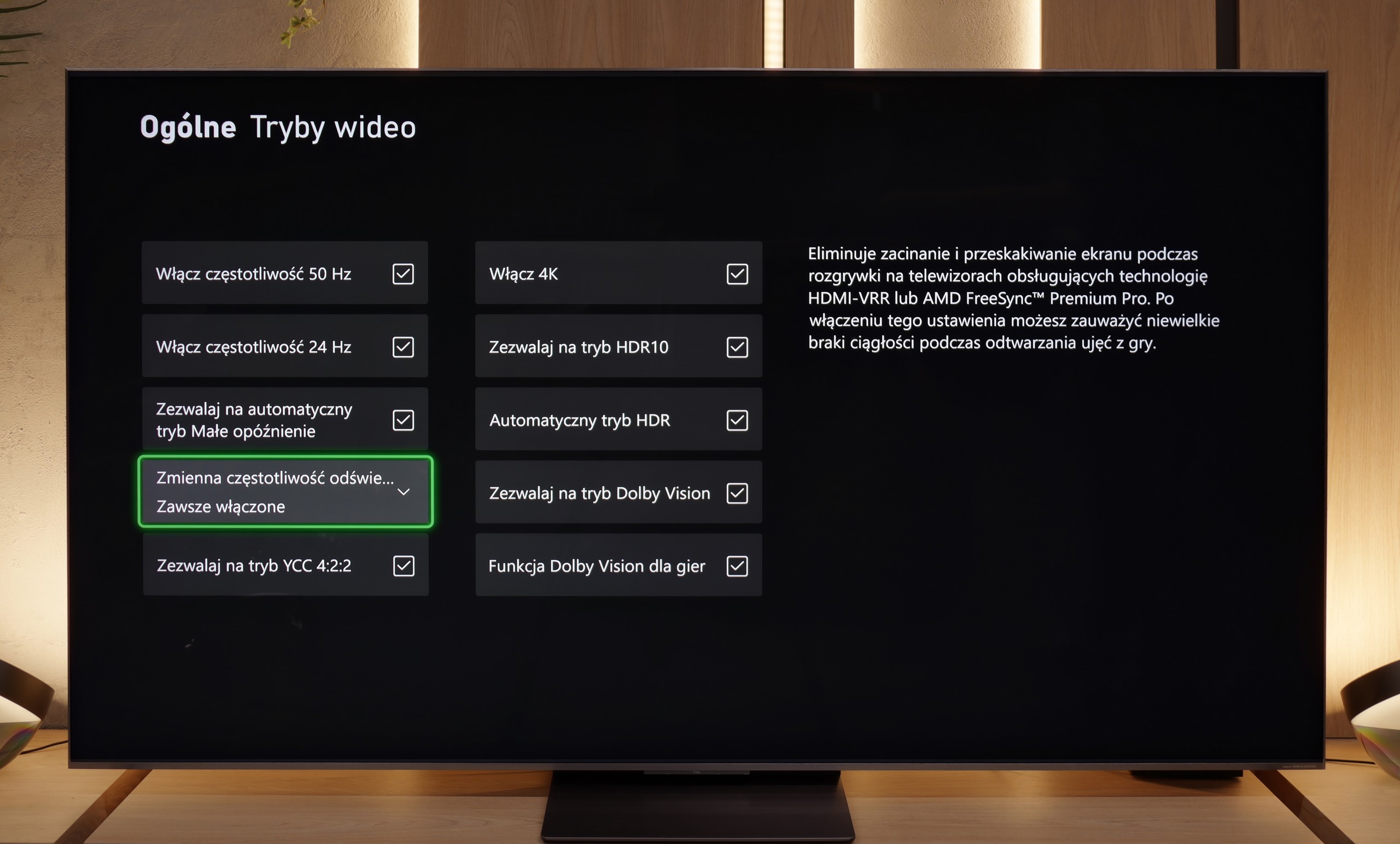

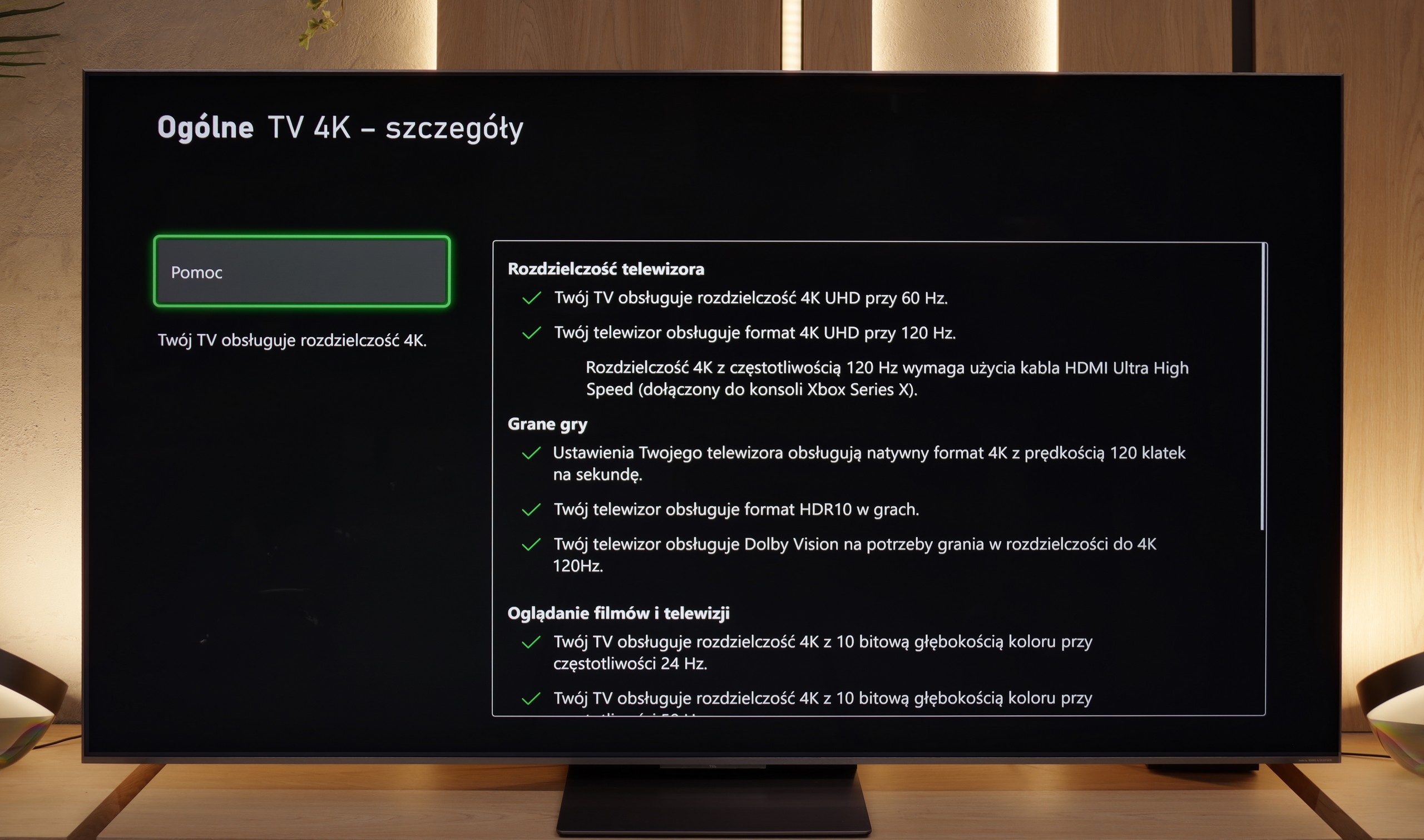

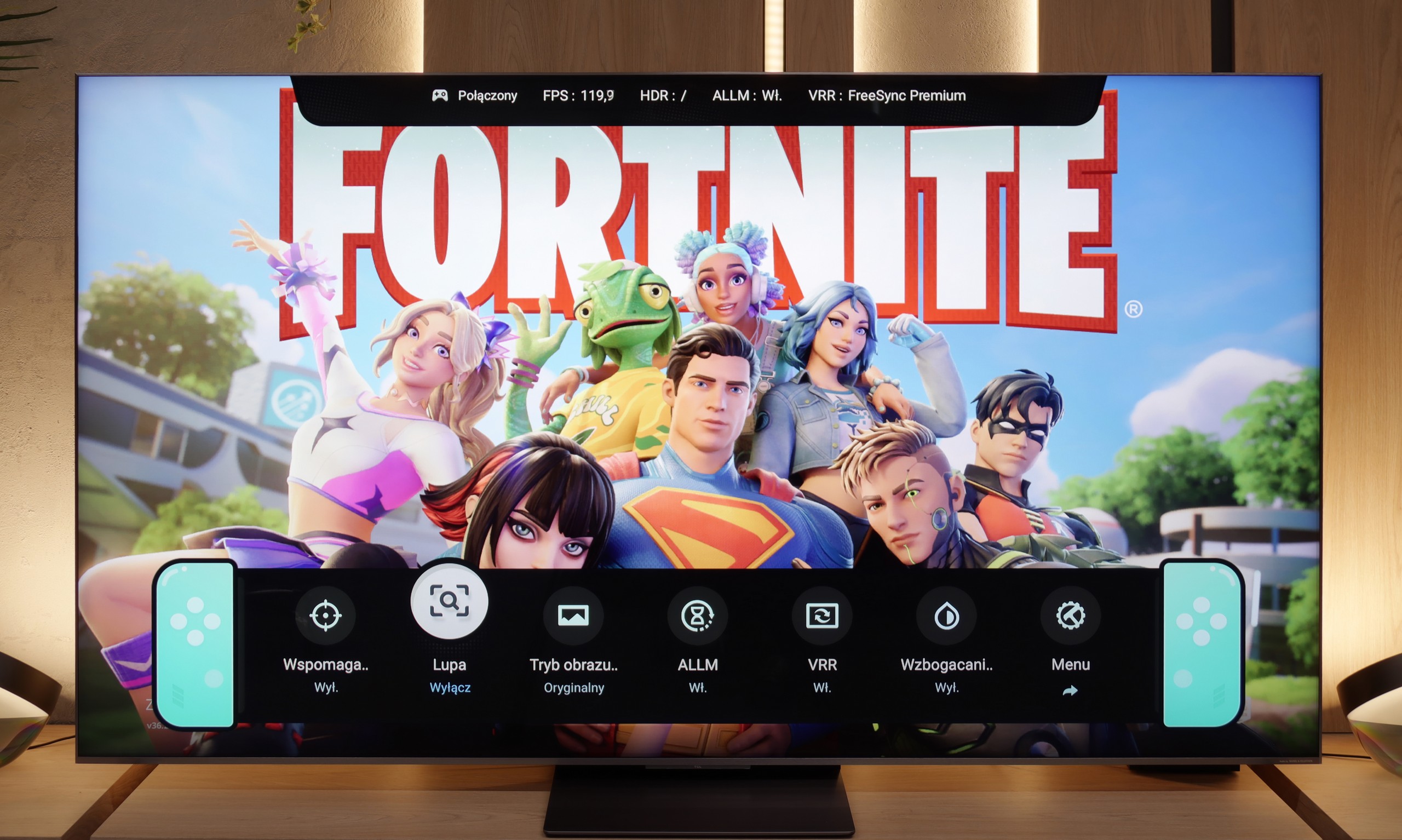

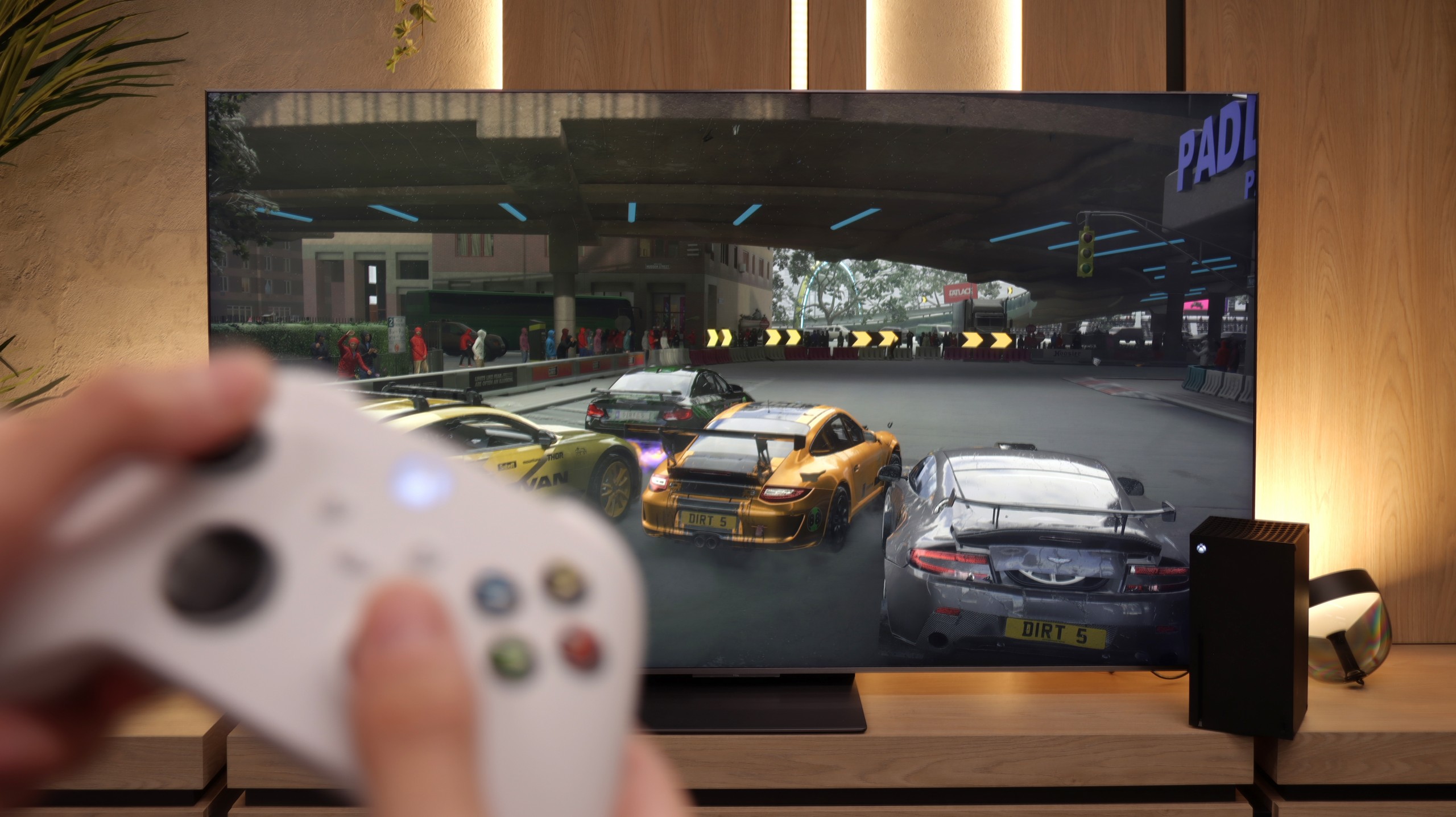

If someone is looking for a gaming TV, the Philips OLED770 is a candidate that's hard to ignore. The mere fact that we have an OLED here provides a great starting point – perfect blacks and infinite contrast make evening sessions in atmospheric games look like they’ve been pulled straight from the cinema. On top of that, there’s the Ambilight system, which features LEDs on the back of the TV that extend the image onto the wall behind the screen. The effect is such that even regular gameplay in FIFA can look like a small spectacle, and in horror games, the atmosphere becomes really intense. On the technical side, it’s pretty good as well. The Philips OLED770 supports Variable Refresh Rate (VRR) up to 120 Hz, has an automatic low latency mode for gamers (ALLM), and if someone is using an Xbox Series X, they can also count on Dolby Vision support in games. You just need to know that in this mode, input lag is slightly higher than standard, although still at an acceptable level. As a bonus, we get the “Game Bar” panel, which is a special tool strip for gamers. It's not the most conveniently designed solution, but it allows you to check key parameters without leaving the game. In total, this presents a picture of a TV that on one hand has all the most important gaming features, and on the other can add something unique – Ambilight. And it’s this mix of technology and visual effect that makes the OLED770 one of the better screens for gaming in a home environment.
Input lag
9.9/10
9.8/10
SDR
HDR
Dolby Vision
As we mentioned earlier, the only anomaly that was detected during testing is the Dolby Vision Gaming mode. In this setting, the latency can reach up to 30 ms. This is not a particularly impressive result, and more demanding players may turn up their noses at it, but in practice – during casual sessions – the difference will not be significantly noticeable. On the other hand, the standard HDR10 and SDR modes perform much better. With a 120 Hz signal, the input lag drops to a minimal 5 ms, which is an outstanding result and places the OLED770 among the top TVs suitable for dynamic gaming. In other words, if someone is not insistent on Dolby Vision on the Xbox, the gaming experience will be fast, smooth, and without unnecessary delays!
Compatibility with PC
8.6/10
7.6/10
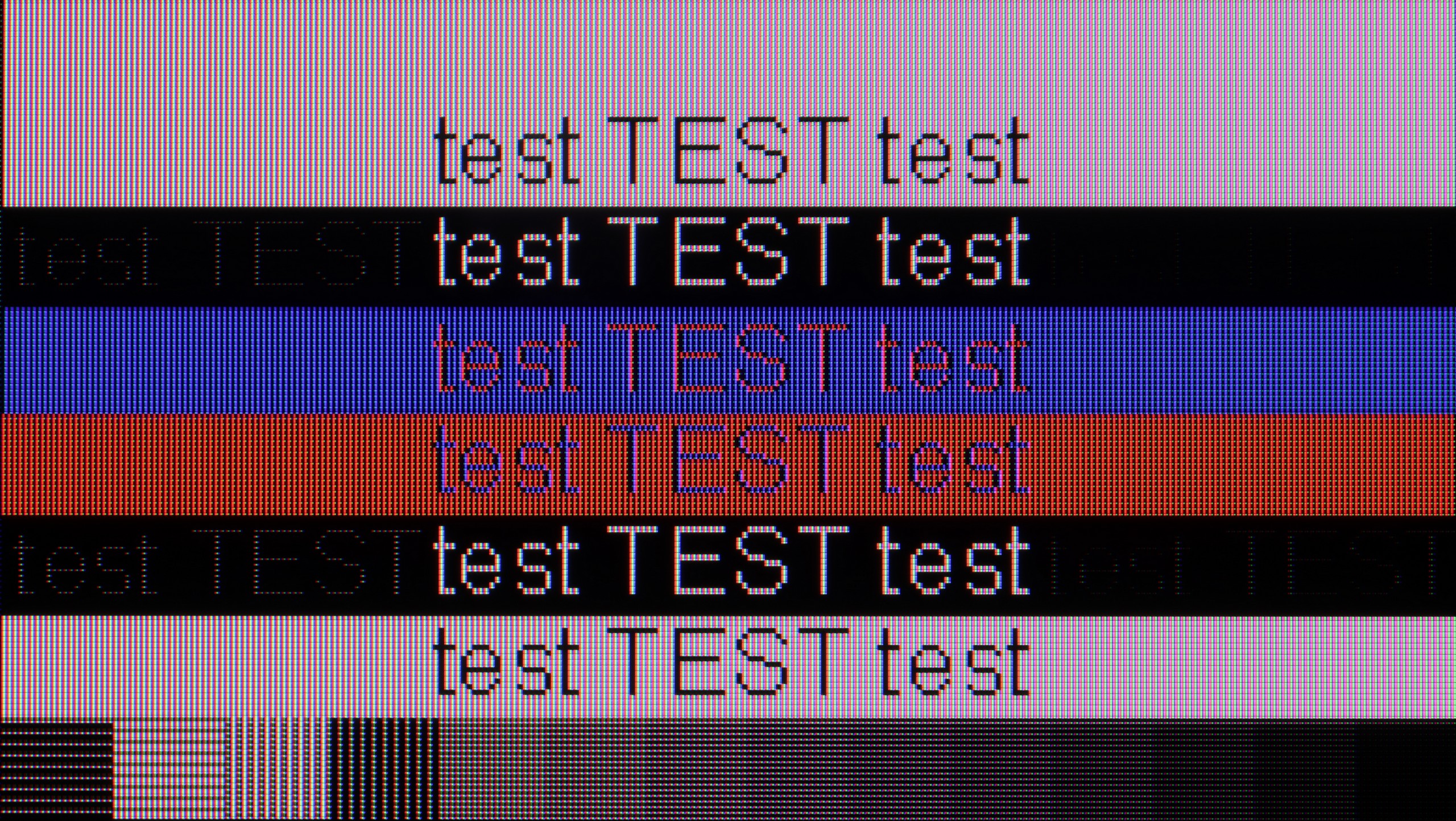

Philips has learned from previous models and finally improved the implementation of chroma 4:4:4. This is important news for those planning to connect their TV to a computer, as it means no issues with sharpness and font readability. The text appears clear and legible, so the OLED770 can easily be called an excellent screen for office work or browsing the internet. Of course, very demanding users may notice some imperfections resulting from the WRGB pixel layout typical of WOLED panels, but in practice, this does not significantly affect comfort. The TV also performs well in games launched from PC. The panel allows for real refresh rates up to 120 Hz, and with low input lag, it provides a very smooth image without visible stutters. The only things missing are support for G-Sync and – as we mentioned earlier – a proper 144 Hz mode, but despite this, the overall performance is really solid. For those looking for a universal screen for both computer and console use, the OLED770 is a choice that is hard to overlook.
Viewing angles
4.5/10
7.7/10
In terms of viewing angles, the Philips OLED770 presents a very high level typical of OLEDs. The image remains clear and saturated even when we look at the screen from the side – there is virtually no drop in contrast or color fading. In this category, it is only outperformed by QD-OLED panels, which can be found either in very expensive premium models or in one exceptional case – the 55-inch Samsung S85F. In everyday use, however, the differences are hard to notice, and the OLED770 performs almost perfectly. Only at truly extreme angles can a slight degradation in colors be observed.
TV efficiency during daytime
6.9/10
4.8/10
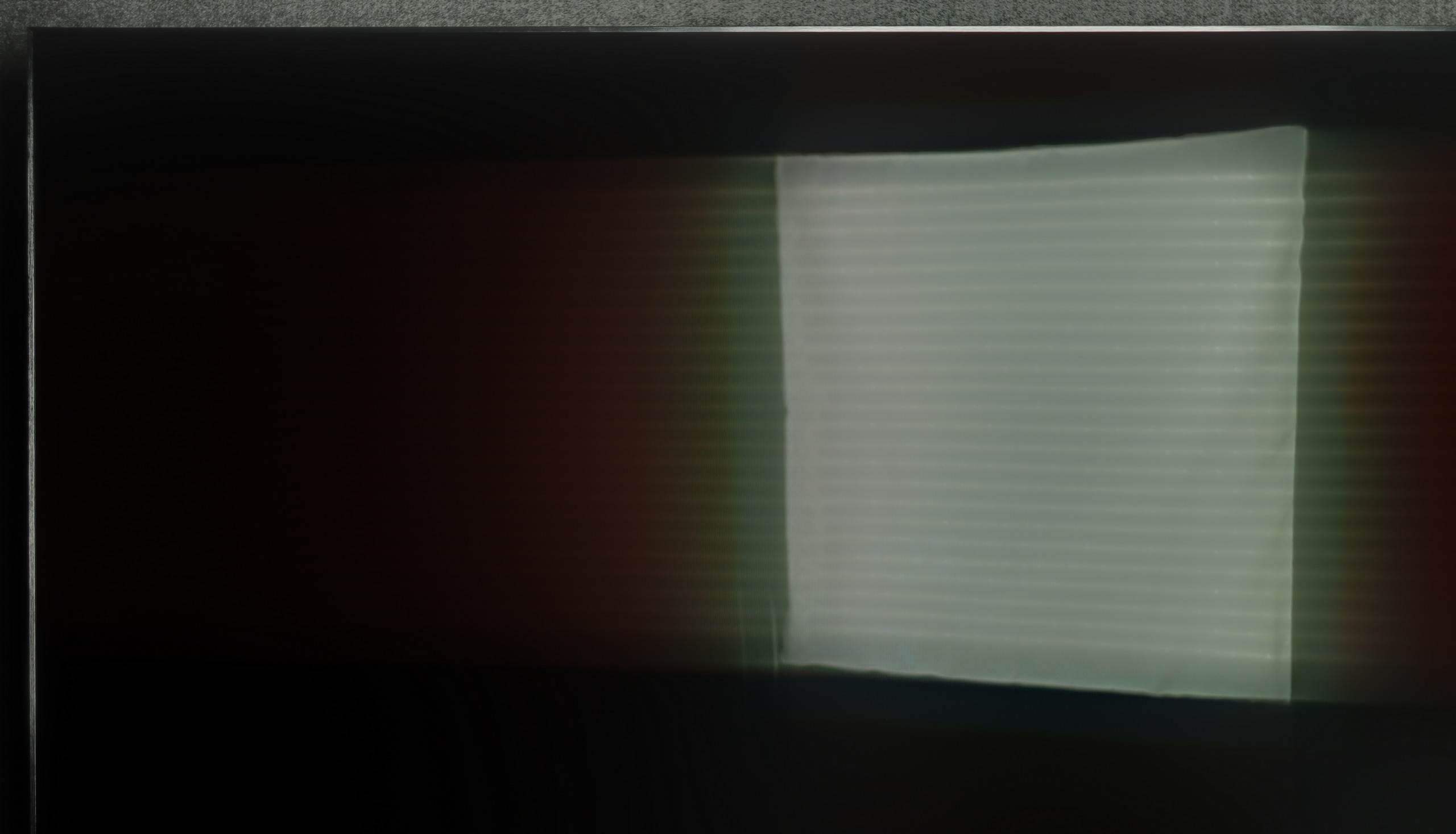



Matrix brightness
Average luminance SDR
Philips OLED770: 249 cd/m2
TCL C8K: 613 cd/m2
OLED770 is not one of the brightest TVs, so it is hard to recommend it for very sunny living rooms. In a bright room, its limitations quickly become apparent – the screen reflects light and acts more like a slightly dimmed mirror. Reflection handling is average, and in direct light, the screen performs poorly. Fortunately, the panel coating does not distort colors, so even during the day, hues remain natural, and blacks do not dramatically lose their depth. Nevertheless, it’s hard to say that the OLED770 is a TV made for bright spaces – it would definitely perform better in a dimly lit living room or a bedroom, where its strengths can fully resonate.
Details about the matrix
Subpixel Structure:

Panel uniformity and thermal imaging:


TV features
7.7/10
5.5/10
- HDMI inputs2 x HDMI 2.0, 2 x HDMI 2.1 48Gbps0 x HDMI 2.0, 4 x HDMI 2.1 48Gbps
- OutputsToslink (Optical audio), eARC (HDMI), ARC (HDMI)Toslink (Optical audio), eARC (HDMI), ARC (HDMI), Mini-Jack (Headphones)
- Network InterfacesWi-Fi 2.4GHz, Wi-Fi 5GHz, Ethernet (LAN) 100MbpsWi-Fi 2.4GHz, Wi-Fi 5GHz, Ethernet (LAN) 100Mbps
- TV receptionDVB-T, DVB-T2, DVB-S, DVB-S2, DVB-CDVB-T, DVB-T2, DVB-S, DVB-S2, DVB-C
Classic features:
- Recording to USB (terrestrial TV)
- Recording programming
- Picture in Picture (PiP)
- RF remote control (no need to aim at the screen)
- Backlit remote control
- Teletext
- Audio only mode
- Bluetooth headphones support
- Simultaneous Bluetooth headphones & TV audio
Smart features:
- AirPlay
- Screen mirroring (Windows Miracast)
- Voice search
- Voice search in native language
- Ability to connect a keyboard and mouse
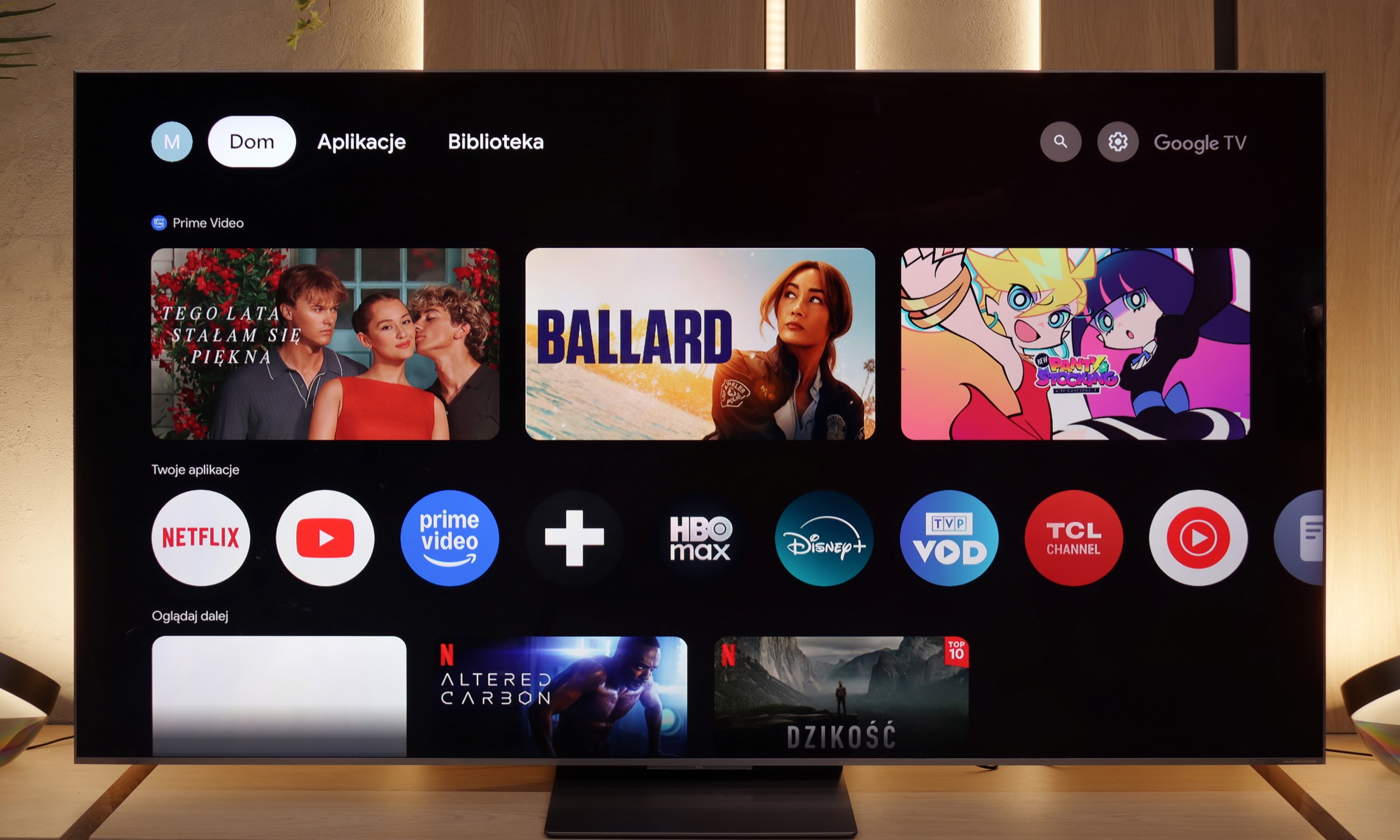
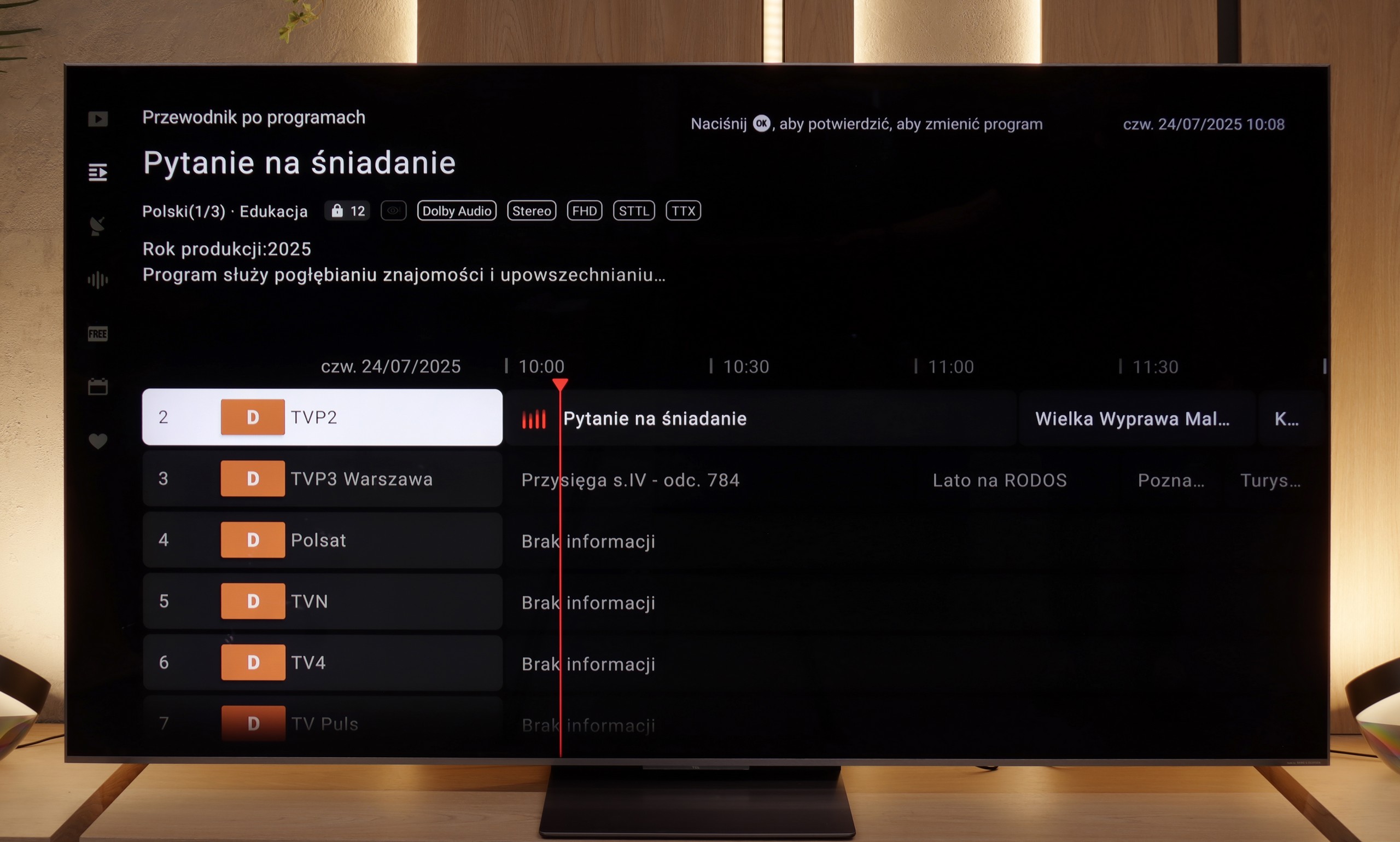
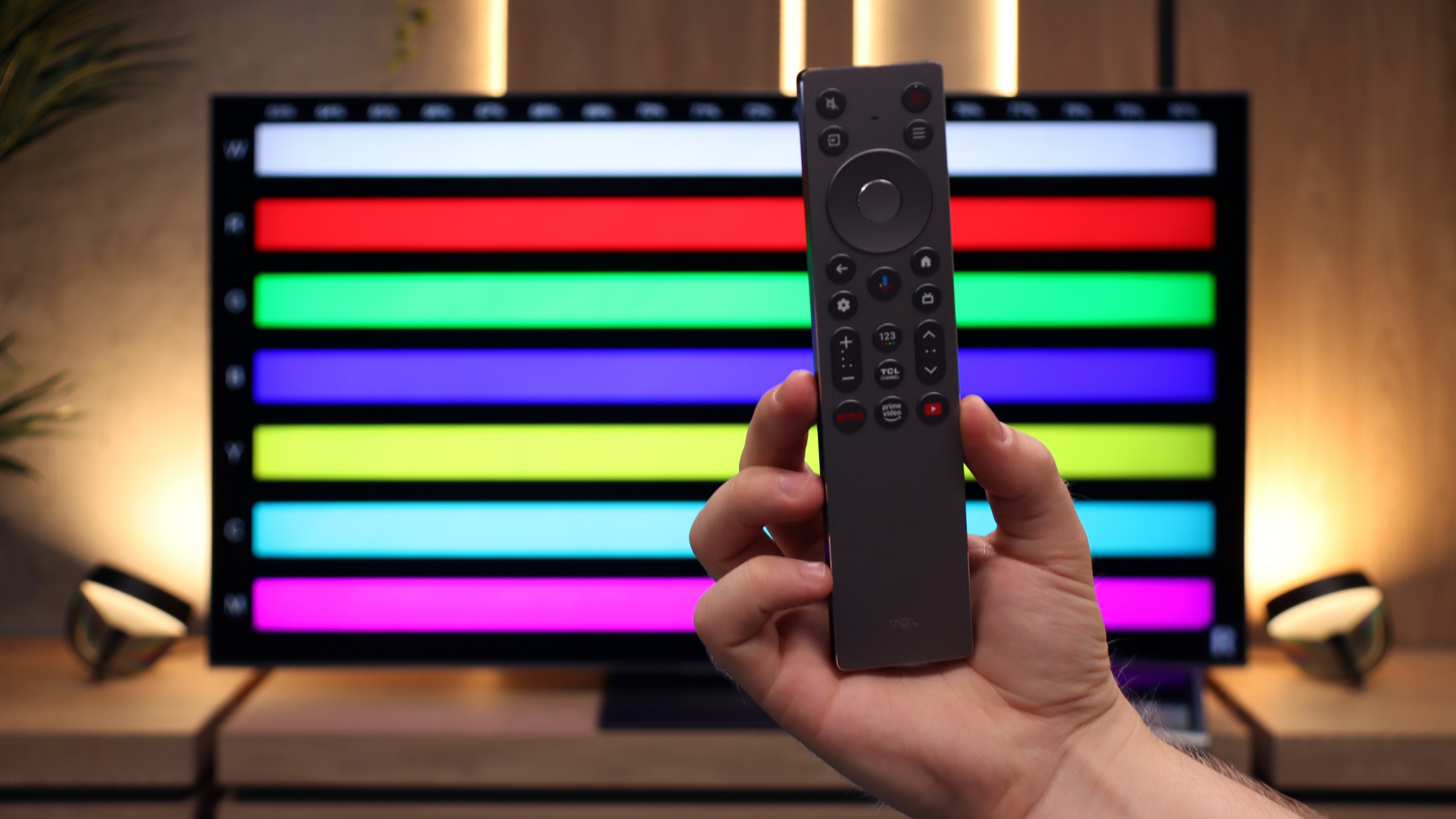
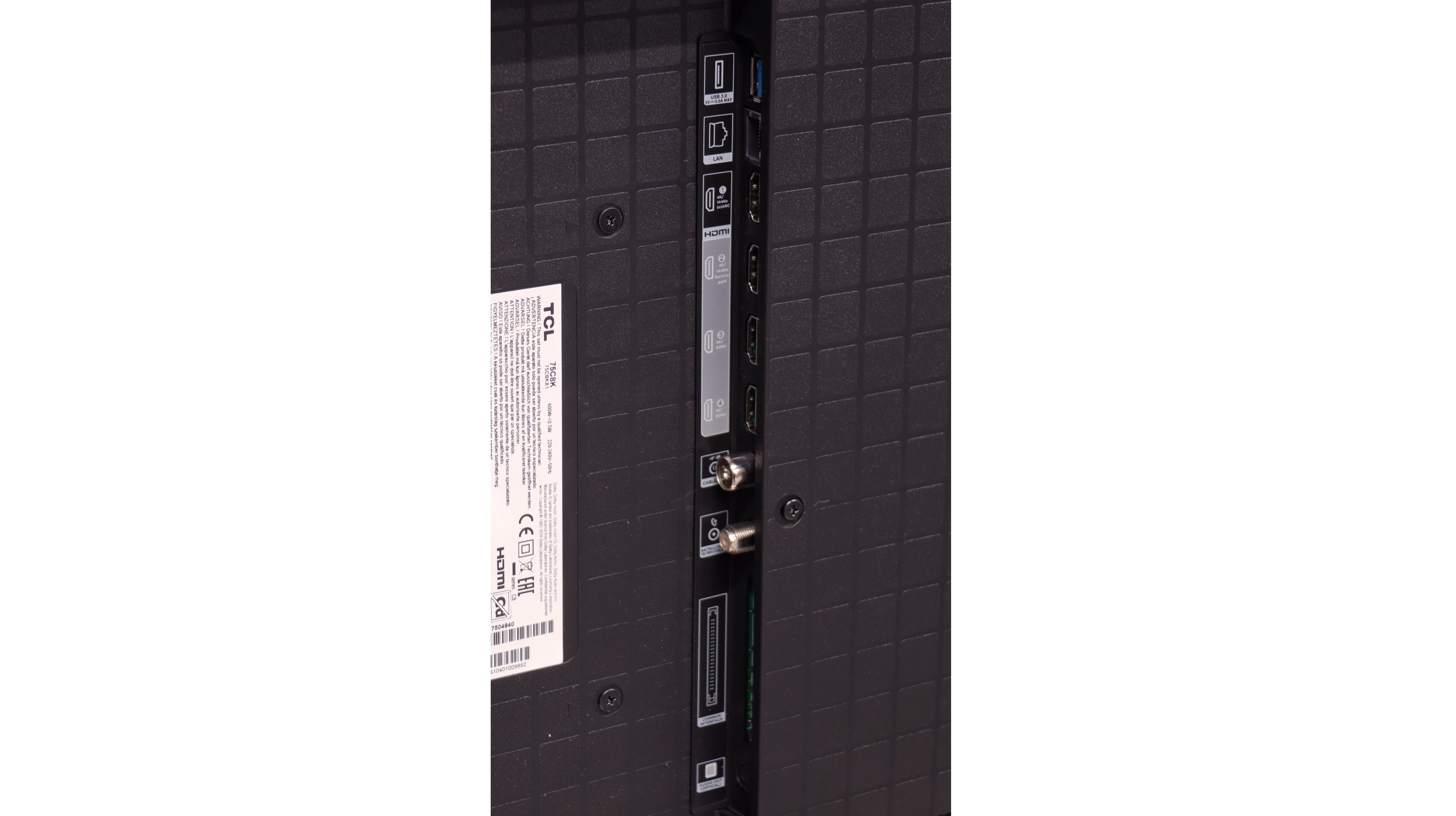




User Functions
Let's start with the basics, that is, the classic functions of a television. The Philips OLED770 doesn't turn the table over; we have a standard EPG interface, the ability to connect devices via Bluetooth, and a few simple configuration options including teletext. An interesting feature is the presence of a jack input, which is now becoming rare. However, it will be appreciated by owners of older receivers or wired headphones. The remote control gives a good impression – it is ergonomic and has a backlit numeric keypad – but here too, there is a sense of a step back. It operates on infrared, so you have to aim at the TV, and by 2025, we would expect full wireless support. The exception is voice commands, which use Bluetooth, but there's no reason for euphoria here either.
SmartTV Features – TitanOS
Speaking of voice – let's move on to the Smart TV system, which is an element that today largely defines the daily comfort of using a television. Here, the OLED770 clearly falls behind the competition. TitanOS works fast enough that it’s hard to call it a tragedy, but daily use can be frustrating due to minor errors and shortcomings. Theoretically, we get support for AirPlay, but on the other hand, screen mirroring didn’t work at all in practice. Voice search? Yes, but only through Amazon Alexa and without support for the Polish language. In other words, the features are there, but when we try to use them, we find their usefulness is severely limited, even downright useless. And it is Smart TV that becomes the biggest bottleneck for the OLED770. The picture can impress, gaming is great, Ambilight provides a unique atmosphere – but when we move to the daily use of apps and services, we feel a lack.
Ambilight – Philips OLED770
Although in terms of smart functionality, the Philips OLED770 performs rather average, it has something in store that the competition sincerely envies. We are, of course, talking about the three-sided Ambilight system, which has been a trademark of this brand's televisions for years. LED lights placed on the back of the casing dynamically illuminate the wall in colors matched to what is currently happening on the screen. The effect is simple but very suggestive – the image seems to extend beyond the edges of the TV, giving us the impression that the screen has suddenly grown by a few extra inches. During a movie screening, it can create an atmosphere, in games it increases immersion, and during everyday TV viewing, it simply pleases the eye. It is this addition that makes, despite the limitations of TitanOS, the OLED770 have something that can attract attention and give it character.
Playing files from USB
9.2/10
8.5/10
Supported photo formats:
Maximum photo resolution:
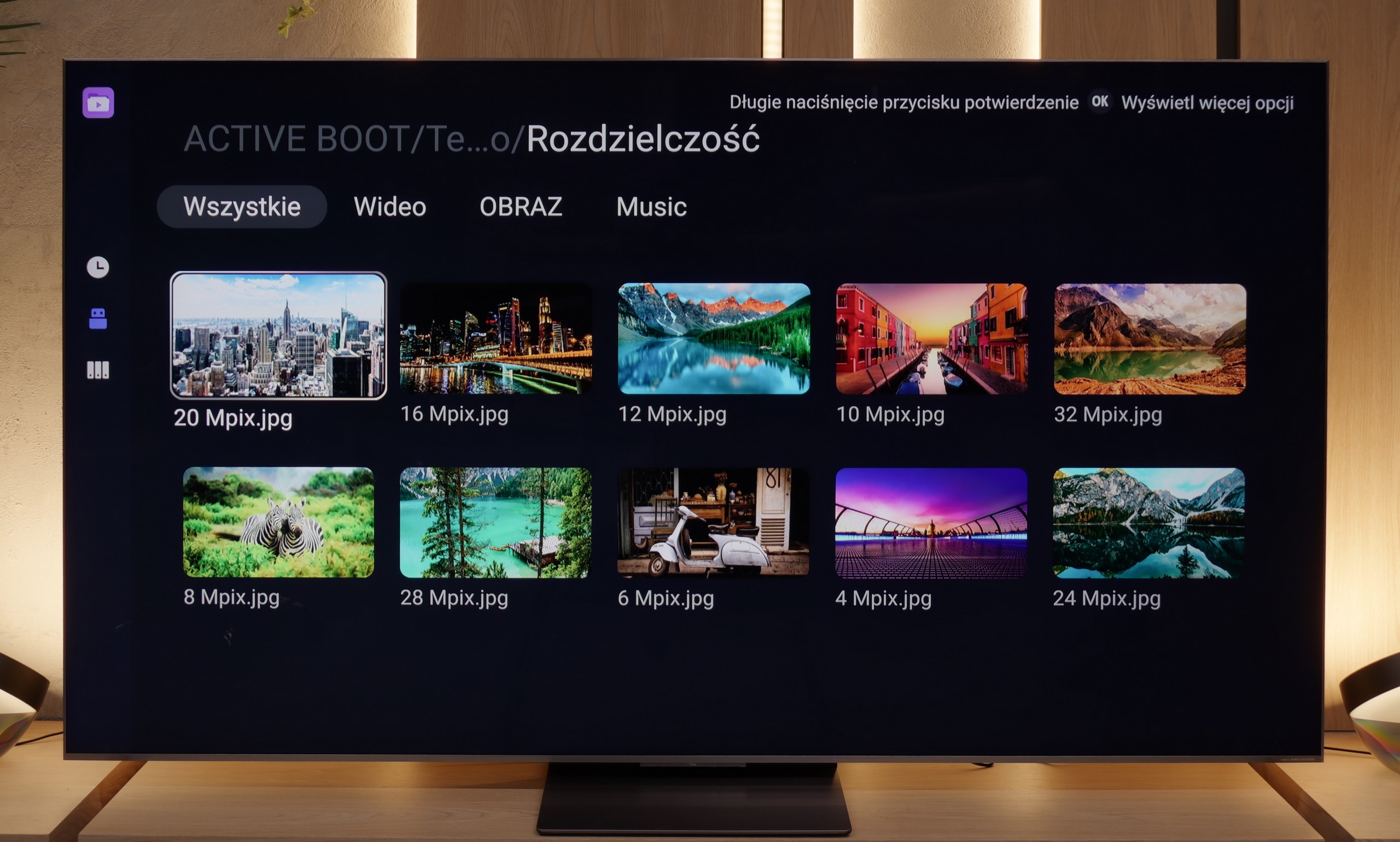

The built-in media player in the Philips OLED770 works quite well, especially when it comes to subtitles – practically every format we threw at it was handled correctly, which will certainly please those watching movies from their own library. However, certain reservations arise with photo support. Not all resolutions are recognized, which may catch users off guard who are used to browsing photographs from classic cameras or older memory cards. Other than that, everything works properly – it's just worth making sure that the television can handle the files we actually want to play on it.
Apps
9.6/10
6.7/10














































Sound
7.9/10
7/10
- Maximum volume77dB80dB
- Dolby Digital Plus 7.1
- Dolby True HD 7.1
- Dolby Atmos in Dolby Digital Plus (JOC)
- Dolby Atmos in Dolby True HD
- DTS:X in DTS-HD MA
- DTS-HD Master Audio
When it comes to sound, the Philips OLED770 performs quite well, although you can't expect strong bass. For regular TV watching, streaming services, or series, its capabilities are more than sufficient – dialogues are clear, and the overall tonal balance is at a decent level. However, when we want to feel the true impact in cinematic productions or games, it quickly becomes apparent that there’s a lack of solid low-end frequencies. In such situations, a natural complement is an additional soundbar or audio system that will allow taking advantage of the excellent picture quality.
On the positive side, versatility in format handling should be noted. The OLED770 works with virtually all popular codecs, including Dolby Atmos, DTS:X, and Dolby TrueHD. This means that by connecting external audio equipment, one can count on a full sound experience, even if the built-in speakers in the television do not make a spectacular impression.
Acoustic Measurements
77dBC (Max)
75dBC
80dBC (Max)
75dBC


